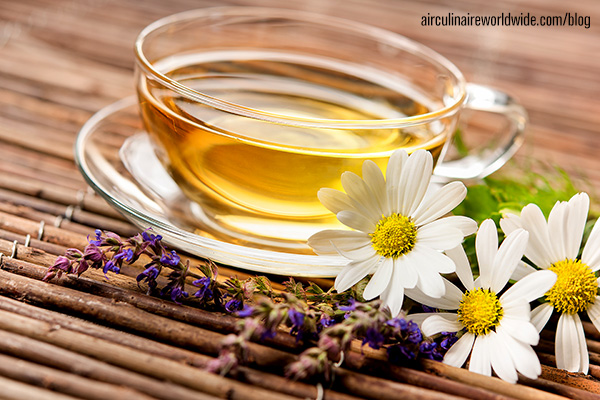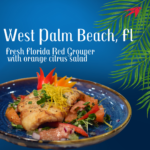While the business jet industry was born in the 1960s, it is estimated through archaeological finding that humans have been consuming botanicals for some 60,000 years. Thanks to the thriving business aviation industry, these two worlds, at seemingly opposite ends of the human evolutionary calendar, work together on a daily basis. Herbal tea is different from regular tea since it is made from various parts of botanicals instead of from tea leaves. While herbs have been used for millennia through various forms of consumption for medicinal and culinary reasons, here we will focus on their usage in tea.
Depending upon your onboard equipment and the size of your galley, herbal tea can be prepared using several methods; whether it is with a traditional kettle, a visually stimulating glass infuser with a blossoming floral herb or a simple tea sachet or bag steeped in hot water. Personally, I use a small cedar wood box to display a variety of tea bags. While there is a whole host of herbal tea varieties available, made of either single herbs or herb blends, the list below is a primer on some of the more popular single herb teas.
As the healthy and natural food movement continues to grow, more people are turning to herbal tea to help with minor discomforts. Keep in mind you should never try to suggest a health remedy to a passenger; tea made from herbs could have side effects, potentially interact with medications or provoke allergies. However, you may want to keep some of these popular herbal teas onboard in case you have passengers who enjoy drinking them.
- Chamomile – Commonly thought of as an herbal tea to help induce sleep, it is made of the dried flower buds and some of the stems. The flower itself looks like a small daisy and is in the same family as daisies, asters and sunflowers. While many varieties of chamomile exist, German chamomile is the most widely used in herbal tea.
- Echinacea – This flowering herb was originally used by Native American tribes and has gained notoriety as a potential immune-boosting Echinacea comes in several varieties and colors, but is commonly also referred to as purple coneflower. Like chamomile, echinacea is also part of the daisy family. The leaves, roots and flowers of echinacea can all be used in tea.
- Ginger – While ginger is a flowing plant, the root is what is commonly used for consumption. Ginger root that adds a punch of warmth and spice to meals and also makes great tea. Ginger has long been believed to help with digestion. Ginger tea is made from the dried root, and some packaged versions come in preformed balls of ginger and honey that you pour directly into hot water to steep and serve as tea.
- Ginseng – Ginseng, also known as panax, typically is available in red or white varieties. This herb has been used extensively in the East and has gained attention in the West over the past few decades. It is believed that ginseng can provide an energy boost and can now even be found in some energy drinks. The tea is made from the dried root of the ginseng plant.
- Hibiscus – The tea, which is known by many different names depending upon the region you are in, is created from dried portions of the plant’s flower. Hibiscus tea is widely used in countries across the globe, from Australia to the Caribbean. Hibiscus contained vitamin C and also is believed to help with blood pressure. It has a unique tart flavor that goes well with natural sweeteners, like agave.
- Mint – While there are numerous varies of mint plants, this type of tea is usually either spearmint or peppermint, with spearmint having a milder taste. Both spearmint and peppermint have a number of vitamins and are also believed to help with digestion and even hiccups. Both types of mint tea are created using the dried leaves of the plant.
- Rooibus – Commonly thought of as a tea, but since it comes from the red berries of a bush, it is actually an herbal tea. Rooibus originally comes from South Africa and is believed to aid in a number of ways, including as a relief for headaches and allergies. Rooibus creates a beautiful red tea with a pleasant taste.
- Tulsi – Also known as holy basil and the “Queen of Herbs,” this herb is popular in India and has been gaining global usage. The tea is made from the leaves of the shrub-like plant and has been found to have several antioxidants. It is believed to have many benefits, including aiding with stress and oral hygiene.
Have favorite herbal tea varieties that you stock onboard? Be sure to share your comments below.
Questions?
If you have any questions about this article or in-flight catering, contact weborders@airculinaire.com.





